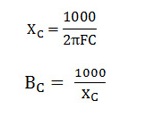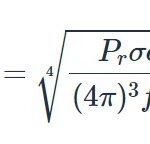What is ARFCN in LTE?
In LTE, ARFCN stands for Absolute Radio Frequency Channel Number. It’s a unique number assigned to each LTE carrier frequency that lets the UE (User Equipment) and the eNodeB refer to a frequency without needing to specify the exact value in MHz. Basically, instead of saying “this frequency is 1805 MHz”, LTE systems just use a predefined ARFCN value — which is easier to handle and more standardized.
As you and I dive deeper into LTE, it becomes clear that ARFCNs help the network keep things organized, especially when it comes to frequency planning, handovers, and measurements. You’ll often come across ARFCNs when configuring network elements or interpreting logs during drive tests or network analysis.
How ARFCN Works in LTE
Each ARFCN corresponds to a specific center frequency, and that mapping depends on whether the LTE system is using FDD (Frequency Division Duplex) or TDD (Time Division Duplex). The 3GPP standards define formulas that convert between ARFCN and frequency for both duplexing modes.
ARFCN Frequency Formula
Let me give you a simple example. For FDD LTE, the uplink and downlink frequencies are calculated using the following formula:
- Downlink Frequency (MHz) = FDL_low + 0.1 × (ARFCN – NOffset)
Where FDL_low is the lowest frequency of the band, and NOffset is the starting ARFCN value for that band. This way, each LTE band has its own ARFCN range and frequency base.
Example ARFCNs for Common Bands
| Band | ARFCN Range | Frequency Range (MHz) | Duplex Mode |
|---|---|---|---|
| Band 1 | 0 – 599 | 2110 – 2170 | FDD |
| Band 3 | 1200 – 1949 | 1805 – 1880 | FDD |
| Band 40 | 38650 – 39649 | 2300 – 2400 | TDD |
Why ARFCN Matters
If you’re working on LTE optimization, network planning, or UE testing, ARFCNs are essential. They ensure the device tunes to the correct frequency and help with accurate measurements and neighbor cell reporting. As we’ve seen in previous articles about LTE handovers and carrier aggregation, ARFCNs also play a key role in defining which carriers can be aggregated together.
So whenever you’re analyzing log files, dealing with frequency conflicts, or configuring scanning parameters, you’ll likely encounter ARFCNs. It’s a small concept but foundational to LTE communication.


